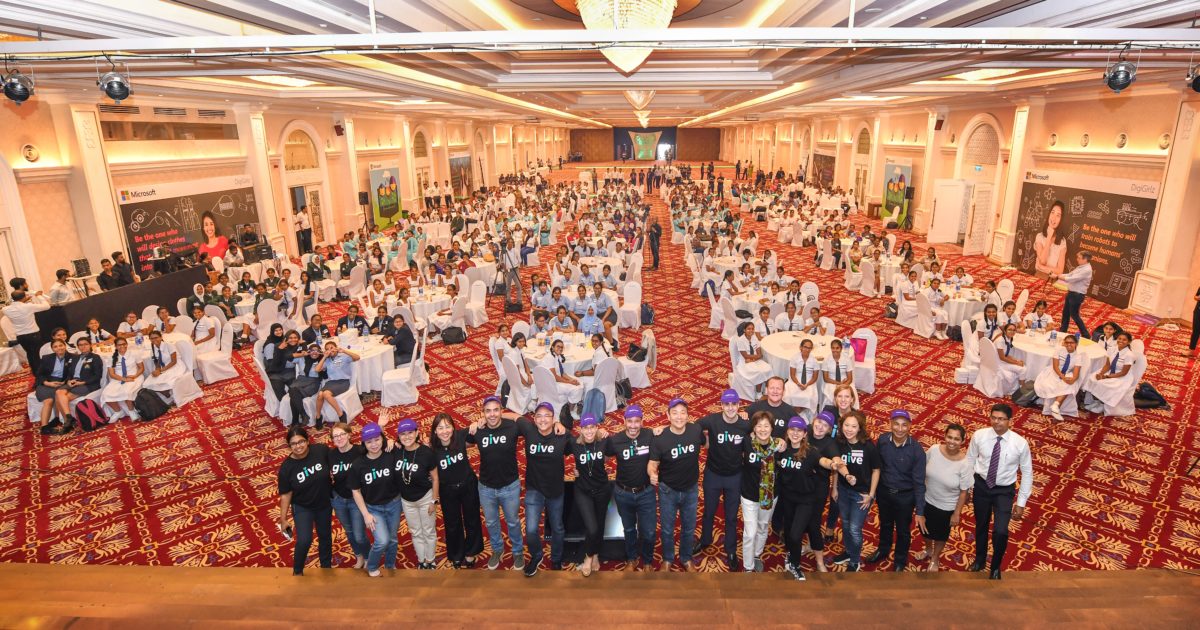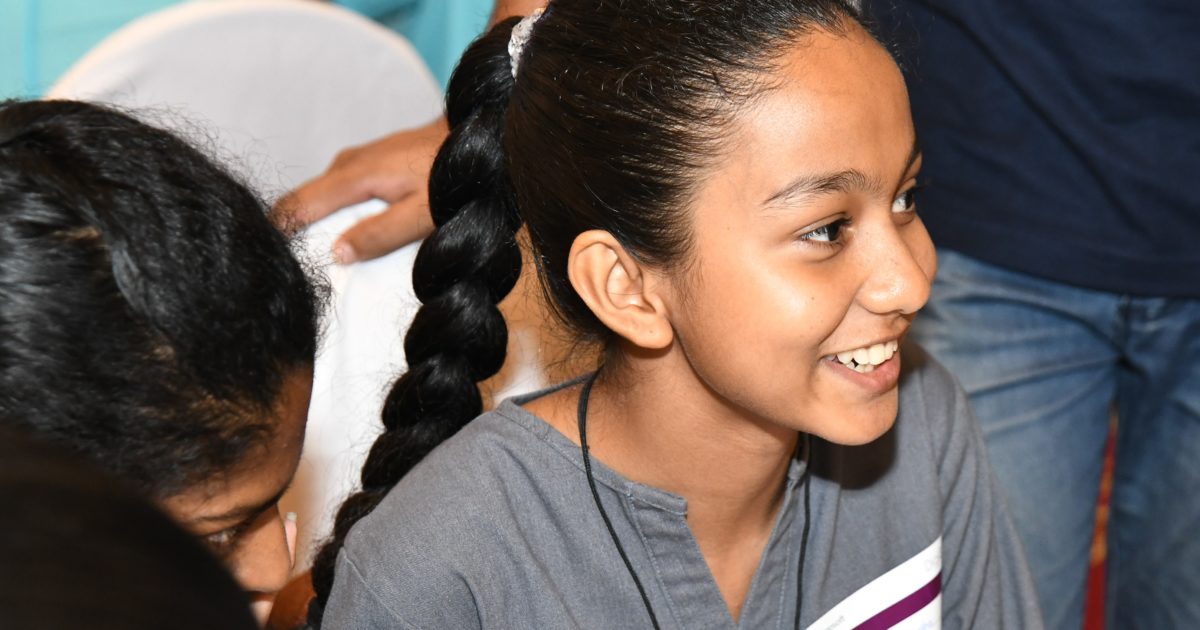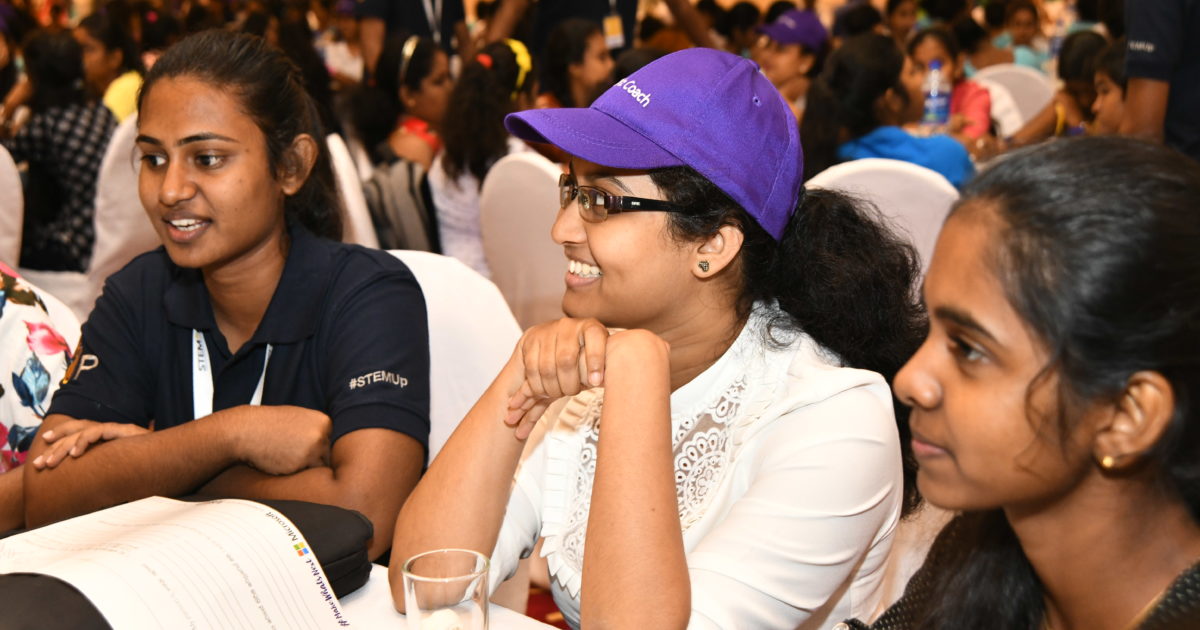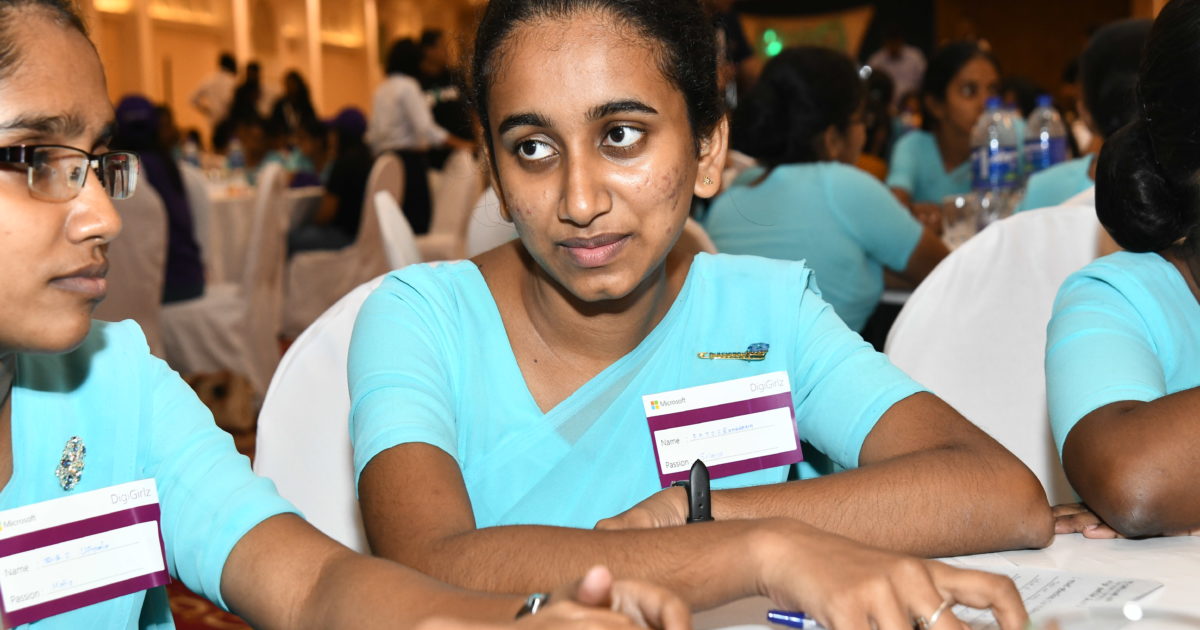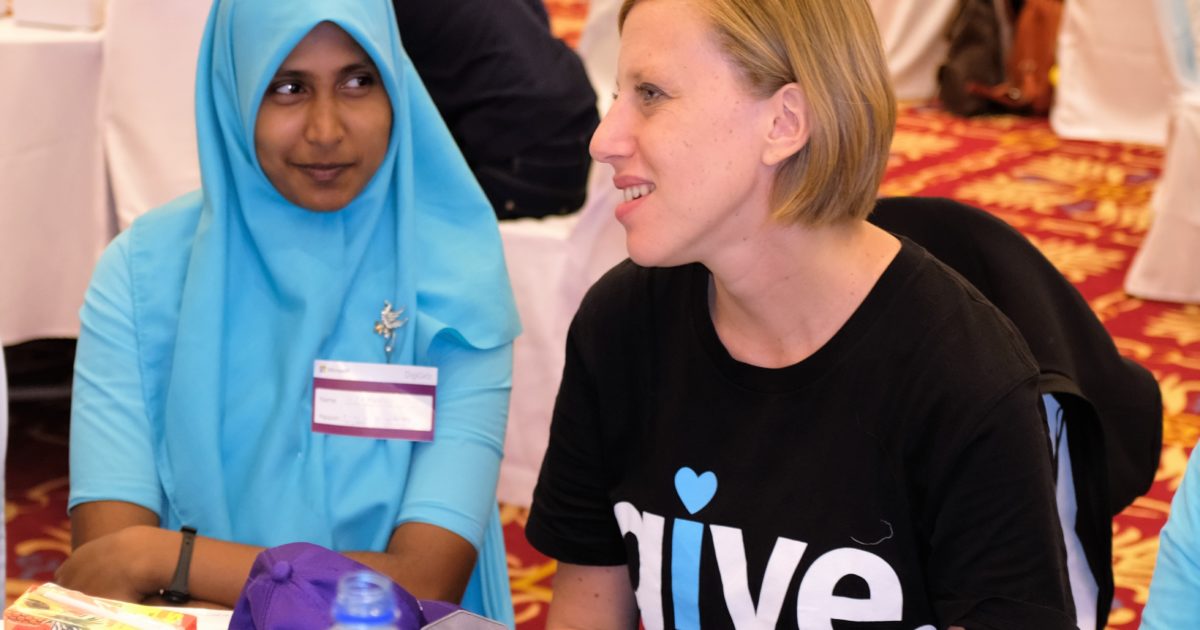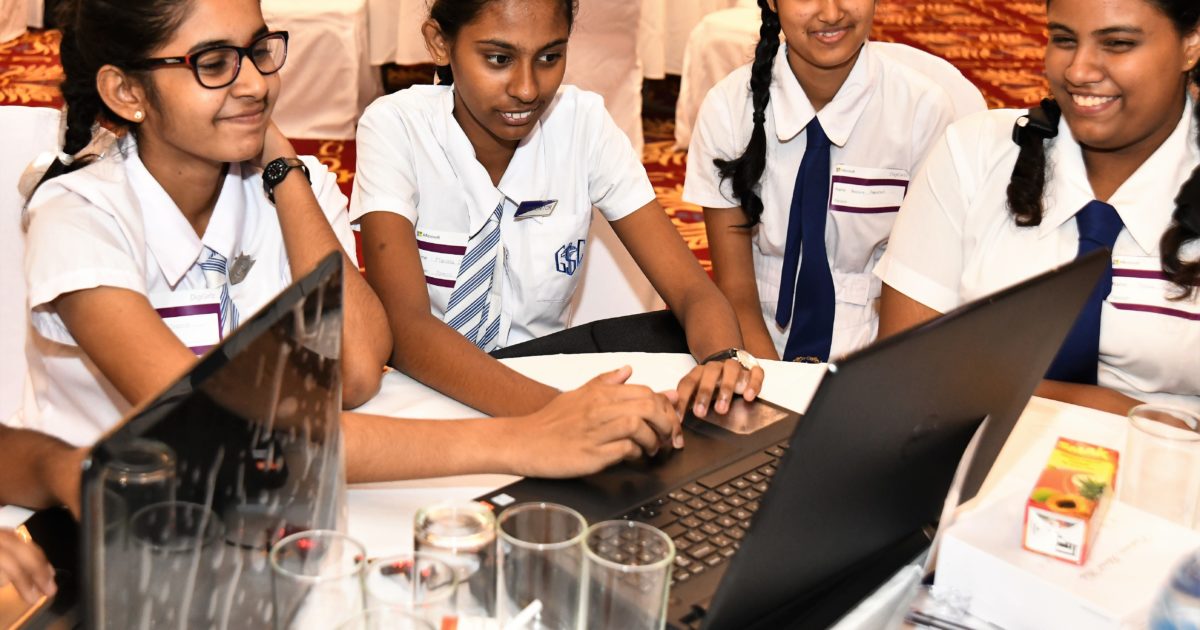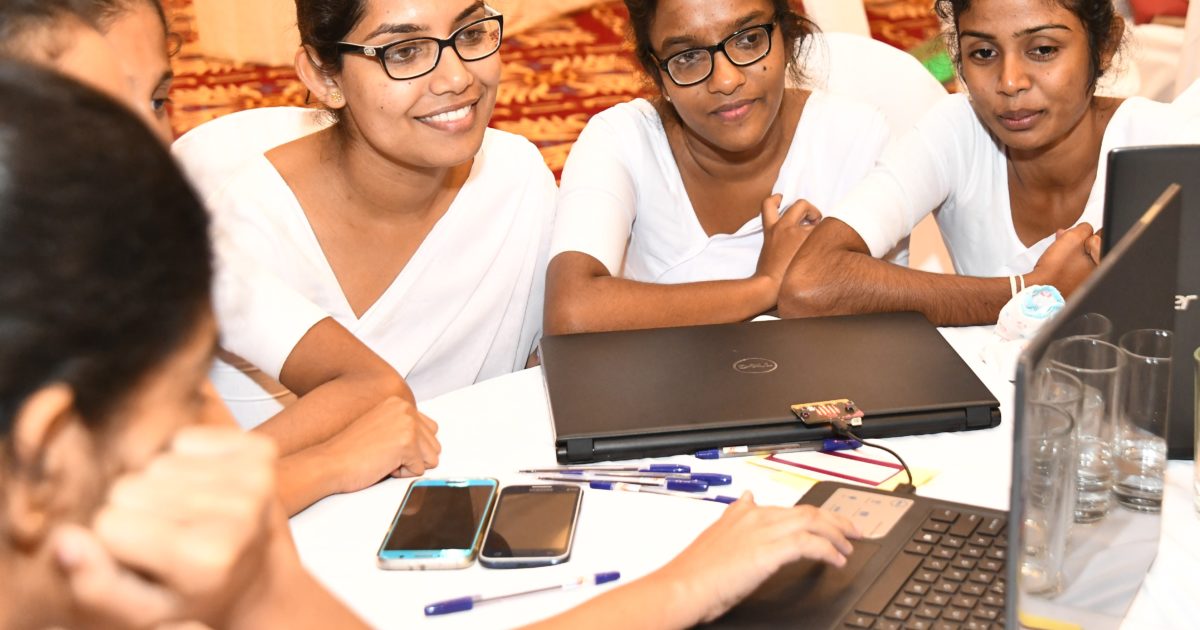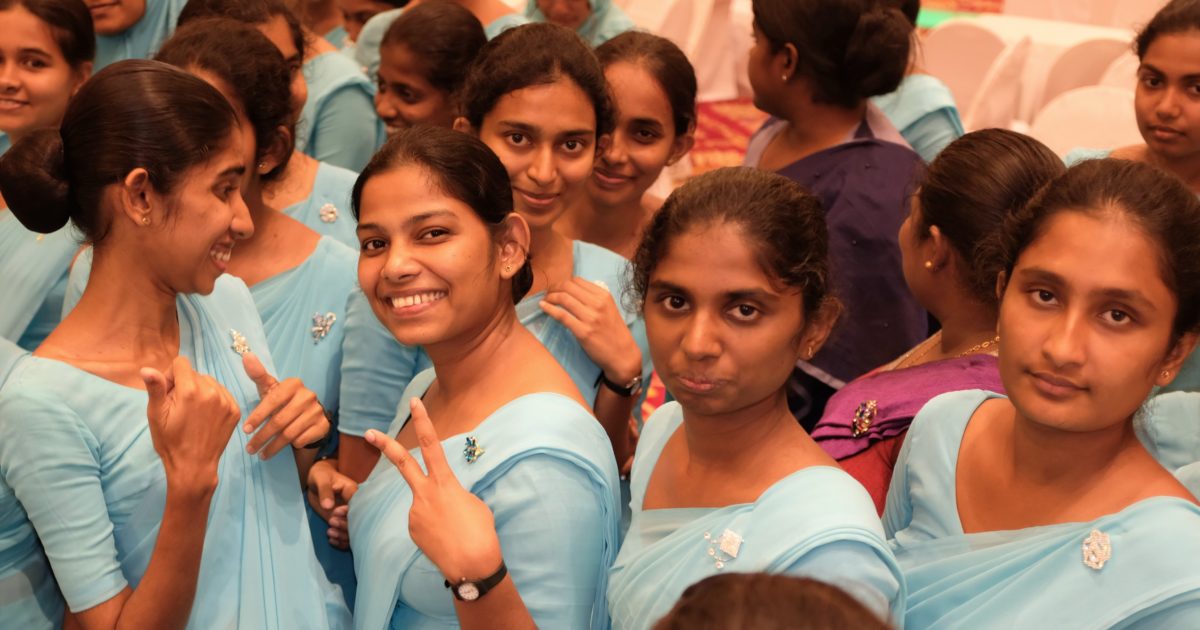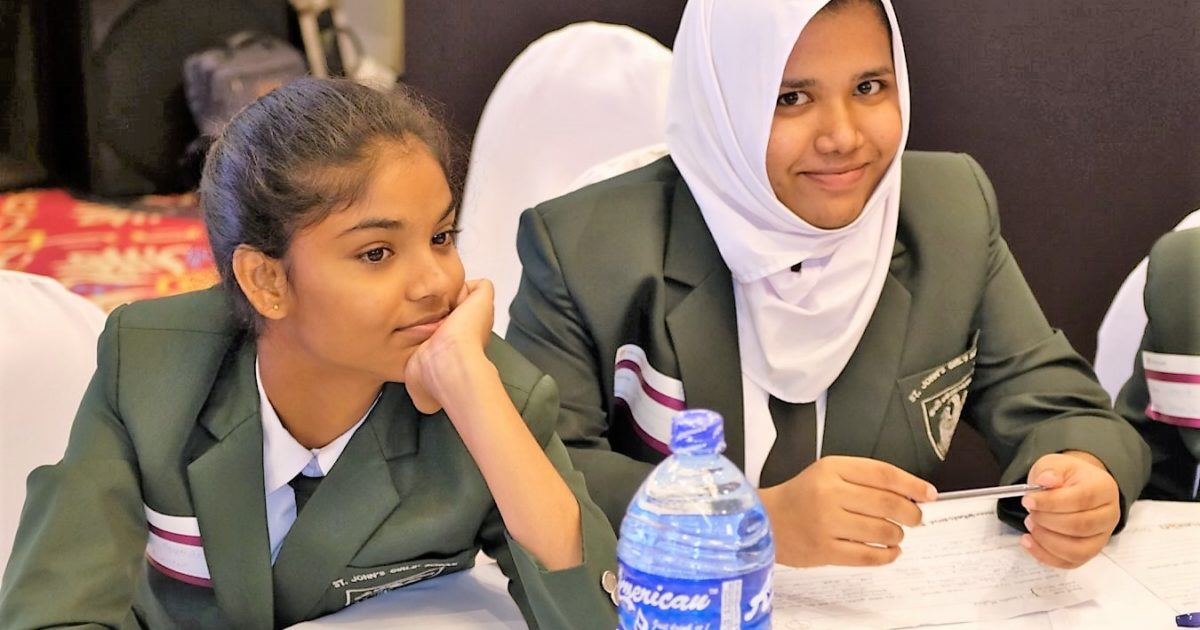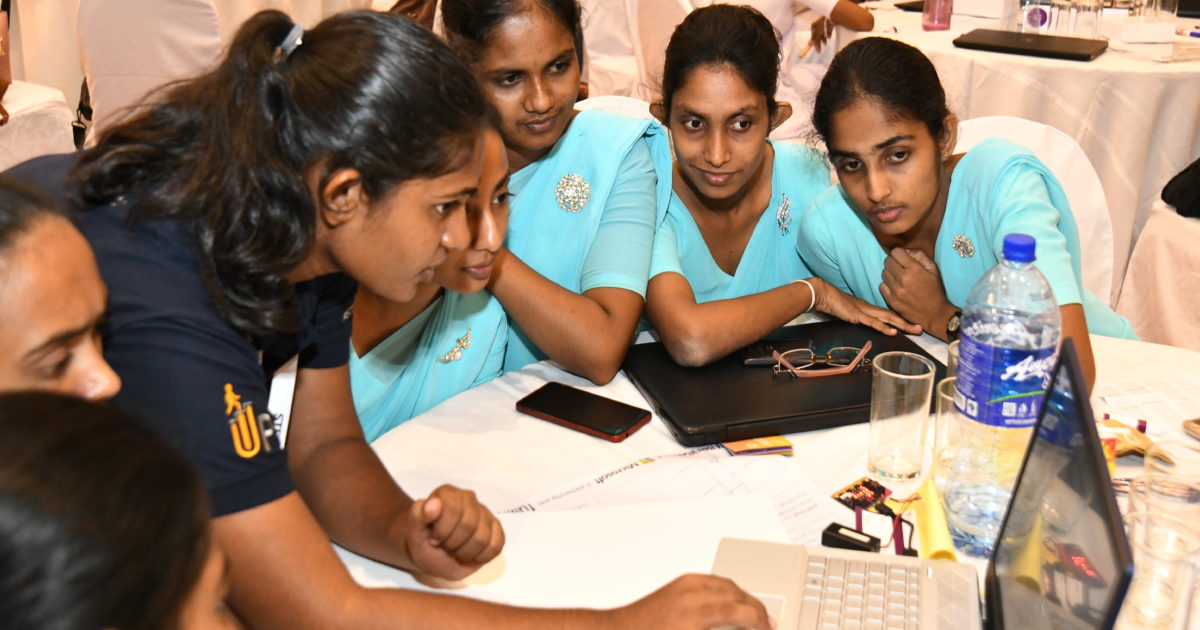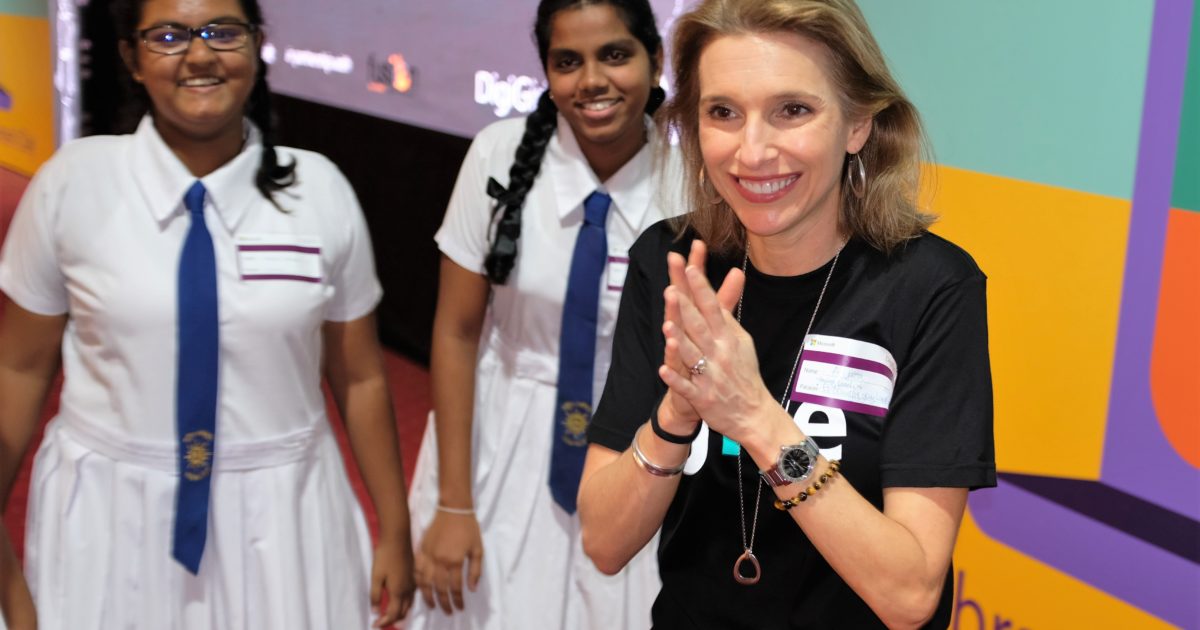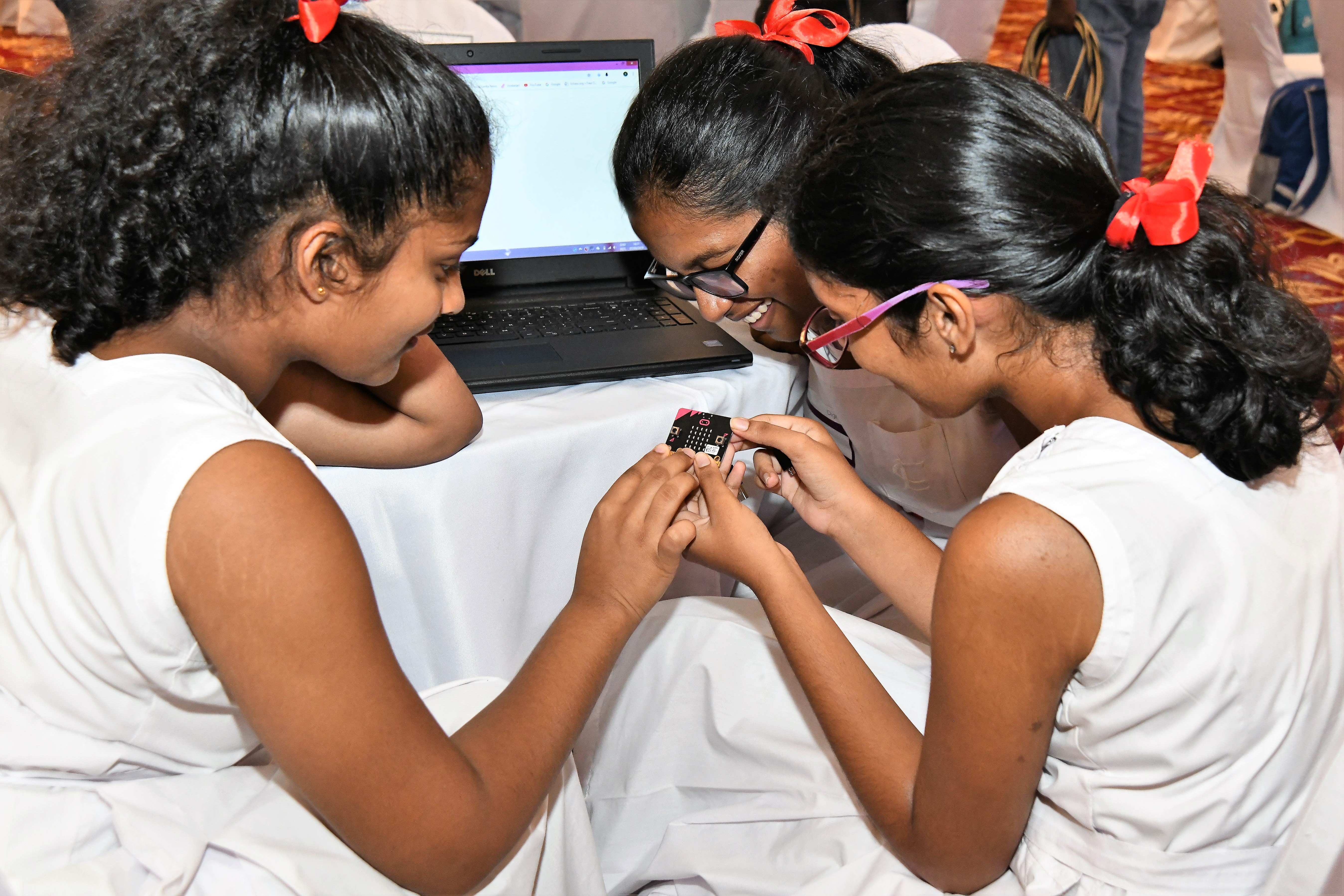
STEM’s female factor: Changing lives, boosting economies, building the future
Asia Pacific's many DigiGirlz are breaking down barriers in science, technology, engineering, and mathematics.
It was an exciting and inspirational day for Tharfa Deen, and perhaps even a turning point in her life.The 18-year-old high school student had long dreamt of a career in medicine. But after learning about how new digital technologies – like artificial intelligence and machine learning – are starting to reshape our world, she now has a new ambition: to use data and science to fight and cure disease.
“Yesterday, I was really nervous about my future. But now I feel I can pursue a biomedical engineering career because of the technology we have,” she said. “Before I wasn’t going to do research. I was just going to go to college, then med school, and then pursue a career as a surgeon.”

Tharfa was among 500 girls, trainee teachers, parents, educators and officials from Sri Lanka who took part in a recent DigiGirlz day in Colombo – the latest in a long series of high-energy programs and activities across Asia Pacific by Microsoft designed to channel more girls and young women into careers in STEM: science, technology, education and mathematics.
By looking beyond traditional female roles and jobs, those who take up STEM-generated opportunities are not just changing their own lives. They are also doing their bit to boost their economies, build their communities, and strengthen their societies.
The transformative potential of female STEM participation for fast-growing and emerging Asian economies is clear. As industries and sectors move into high-end tertiary manufacturing and globally marketed services, they will increasingly need digital-literate workers and highly skilled STEM specialists.
“Women and girls play a critical role in shaping our future. We need more scientists, mathematicians, inventors, engineers, and leaders, which means we need more girls studying science, technology, engineering, and math in schools,” said Andrea Della Mattea, Microsoft APAC President.

“At Microsoft, our mission is to empower every person and every organization on the planet to achieve more. We strive to create a diverse and inclusive environment, which enables and inspires all people to achieve more. Attracting, developing and helping women in STEM fields to thrive is vital for an inclusive society and prosperous country.”
Sri Lanka’s government clearly understands the importance of enticing a new generation of women into STEM. To show their support, officials hosted the DigiGirlz event in a plush and spacious reception hall in the heart of its prime ministerial complex in downtown Colombo.
The venue’s symbolic grandeur made the day special for the participants from schools in the capital, smaller cities, and rural areas. But the real “wow factor” came with the day’s content and activities – meeting female role models, exploring career options, solving problems, collaborating, and acquiring new skills, such as coding using MakeCode micro:bit.
They sat down with some senior Microsoft APAC executives and discussed how STEM could be used to develop their passions. They were encouraged to adopt a growth mindset, to challenge themselves, and to break down their goals into smaller actionable steps.

“It was really exciting to learn about technologies that are beyond a computer screen and that we can use to help and change the lives of every day and underprivileged people,” said Year 12 student, Shenaya Fernando, who is contemplating a career in mechanical engineering. “My passion is to help under-educated and underprivileged people in rural areas of Sri Lanka and India so that they can live better lives.”
One of her highlights from the day was talking face-to-face with successful role models on how to gain confidence, overcome setbacks, deal with failure, and pursue dreams and ambitions in education, technology, and business. “I saw how they have been in the same place that I and other girls are in now. And, how they took their lives in different ways.”
The DigiGirlz program sets out to address a global gender imbalance in STEM. According to UNESCO, women make up only 29 percent of those in science research and development globally, with that dropping to as low as 19 percent in some parts of our region.
A recent survey conducted with YouGov found that 32 percent of teachers in Asia Pacific believe a lack of interest is a primary reason why many girls don’t take up computer science subjects.
There is hope, however. Indhuarthi Gnanamoney, who teaches information and communications technology (ICT) at an all-girls college in Colombo, says many girls have long regarded computer-related subjects as “too hard and technical.” But this is changing.
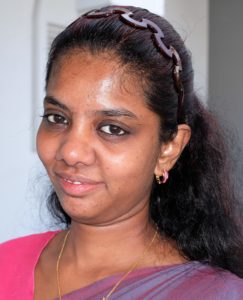
“For boys, it (ICT) has become an essential part of learning. As for girls, they have tended to choose other electives, like health. They think that is a better choice for when they try to choose a career path … I am trying to get them out of this mentality,” she said, adding that more female students now recognize the career value of digital skills at a time when technology is reshaping almost all fields of work.
She said events like DigiGirlz inspire students “to discover themselves, to dare to try new things, and solve problems.” These goals came into focus later in the day when the participants formed teams that identified societal challenges and devised innovative solutions.
They tossed about concepts and sketched out proposals on big sheets of paper – while the role of technology was always front of mind, what mattered here were ideas, not devices. The results of this problem-solving and collaboration exercise were inspirational, eclectic, and surprising.
One team suggested using augmented reality to help people with degenerative brain disorders, such as dementia, to emotionally keep their memories alive. Another group proposed an intelligent washing machine and a special detergent to detect the early signs of diseases by analyzing sweat on clothes. Others conceptualized an interactive compass that would help orientate people who are blind or with low vision when they lose smartphone coverage. There were also calls for data to help organize better garbage collection in highly populated urban areas and a digital platform to better promote girls’ bands and pop artists.
For Shenaya and her classmates, this freewheeling design thinking exercise was both enlightening and empowering. Importantly, it underscored how wide open a STEM-driven future for might be for everyone.
“Technology opens up a world full of opportunities for us to explore. It helps to know that 60 percent of future job opportunities are still unknown. I am excited by that,” she said. “It is possible that I will be doing something in my career that no one has thought about yet. It is really exciting.”
Main top image: DigiGirlz participants examine a MakeCode micro:bit
Click on our photo gallery:
To learn more, visit https://www.microsoft.com/en-us/digital-skills/girls-stem-cs





